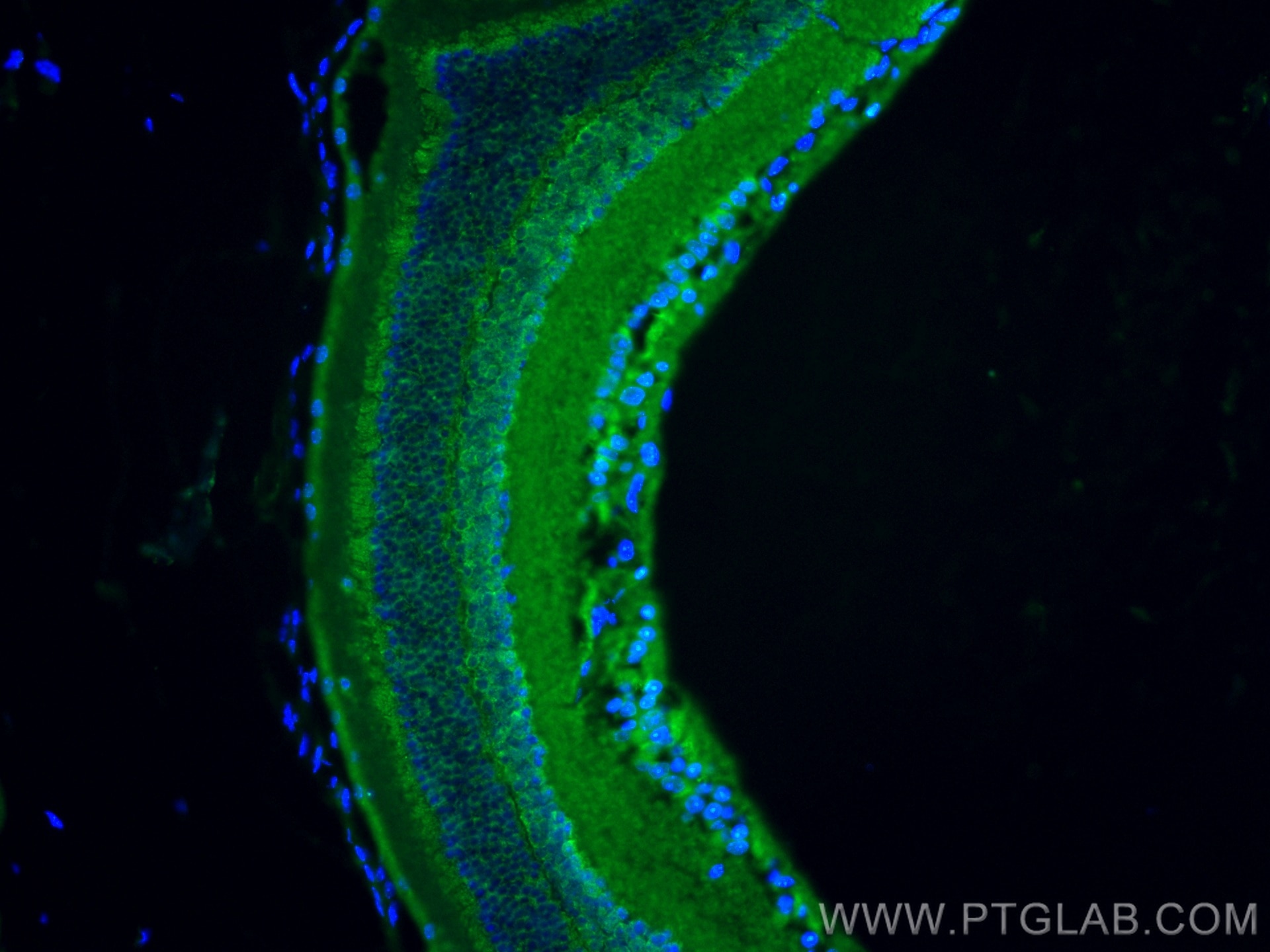OPN4 Polyklonaler Antikörper
OPN4 Polyklonal Antikörper für IF-P, ELISA
Wirt / Isotyp
Kaninchen / IgG
Getestete Reaktivität
human, Maus
Anwendung
IF-P, ELISA
Konjugation
Unkonjugiert
Kat-Nr. : 24478-1-AP
Synonyme
Geprüfte Anwendungen
| Erfolgreiche Detektion in IF-P | Maus-Augengewebe |
Empfohlene Verdünnung
| Anwendung | Verdünnung |
|---|---|
| Immunfluoreszenz (IF)-P | IF-P : 1:50-1:500 |
| It is recommended that this reagent should be titrated in each testing system to obtain optimal results. | |
| Sample-dependent, check data in validation data gallery | |
Produktinformation
24478-1-AP bindet in IF-P, ELISA OPN4 und zeigt Reaktivität mit human, Maus
| Getestete Reaktivität | human, Maus |
| Wirt / Isotyp | Kaninchen / IgG |
| Klonalität | Polyklonal |
| Typ | Antikörper |
| Immunogen | OPN4 fusion protein Ag21643 |
| Vollständiger Name | opsin 4 |
| Berechnetes Molekulargewicht | 478 aa, 53 kDa |
| GenBank-Zugangsnummer | BC113558 |
| Gene symbol | OPN4 |
| Gene ID (NCBI) | 94233 |
| Konjugation | Unkonjugiert |
| Form | Liquid |
| Reinigungsmethode | Antigen-Affinitätsreinigung |
| Lagerungspuffer | PBS with 0.02% sodium azide and 50% glycerol |
| Lagerungsbedingungen | Bei -20°C lagern. Nach dem Versand ein Jahr lang stabil Aliquotieren ist bei -20oC Lagerung nicht notwendig. 20ul Größen enthalten 0,1% BSA. |
Hintergrundinformationen
OPN4, an opsin that was first isolated from the skin of Xenopus laevis in 1998, belongs not to the vertebrate-type opsin family but rather to the invertebrate-type opsins, which are part of the seven-transmembrane G protein-coupled receptor (GPCR) family (PMID:31989708). In humans, OPN4 is expressed in the retinal ganglion cells in addition to part of the brain (PMID:10632589). Moreover, Opn4 functions as a photoreceptor by detecting brightness levels and discriminating visual signals (PMID:22633808). Opn4 also facilitates visual circuits to acquire optimal settings and light adaptation by measuring irradiance levels (PMID:25517373).
Protokolle
| PRODUKTSPEZIFISCHE PROTOKOLLE | |
|---|---|
| IF protocol for OPN4 antibody 24478-1-AP | Protokoll herunterladen |
| STANDARD-PROTOKOLLE | |
|---|---|
| Klicken Sie hier, um unsere Standardprotokolle anzuzeigen |


